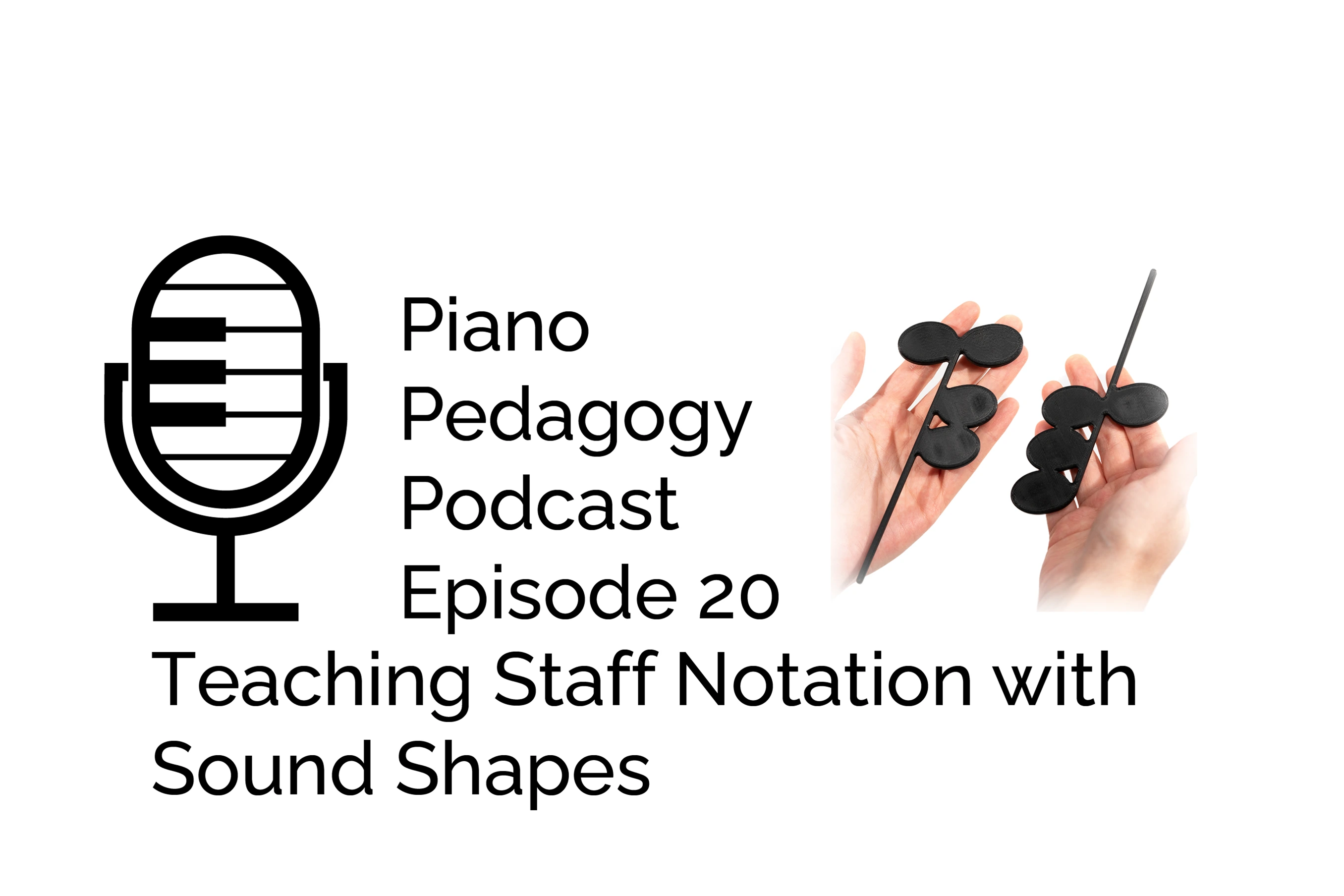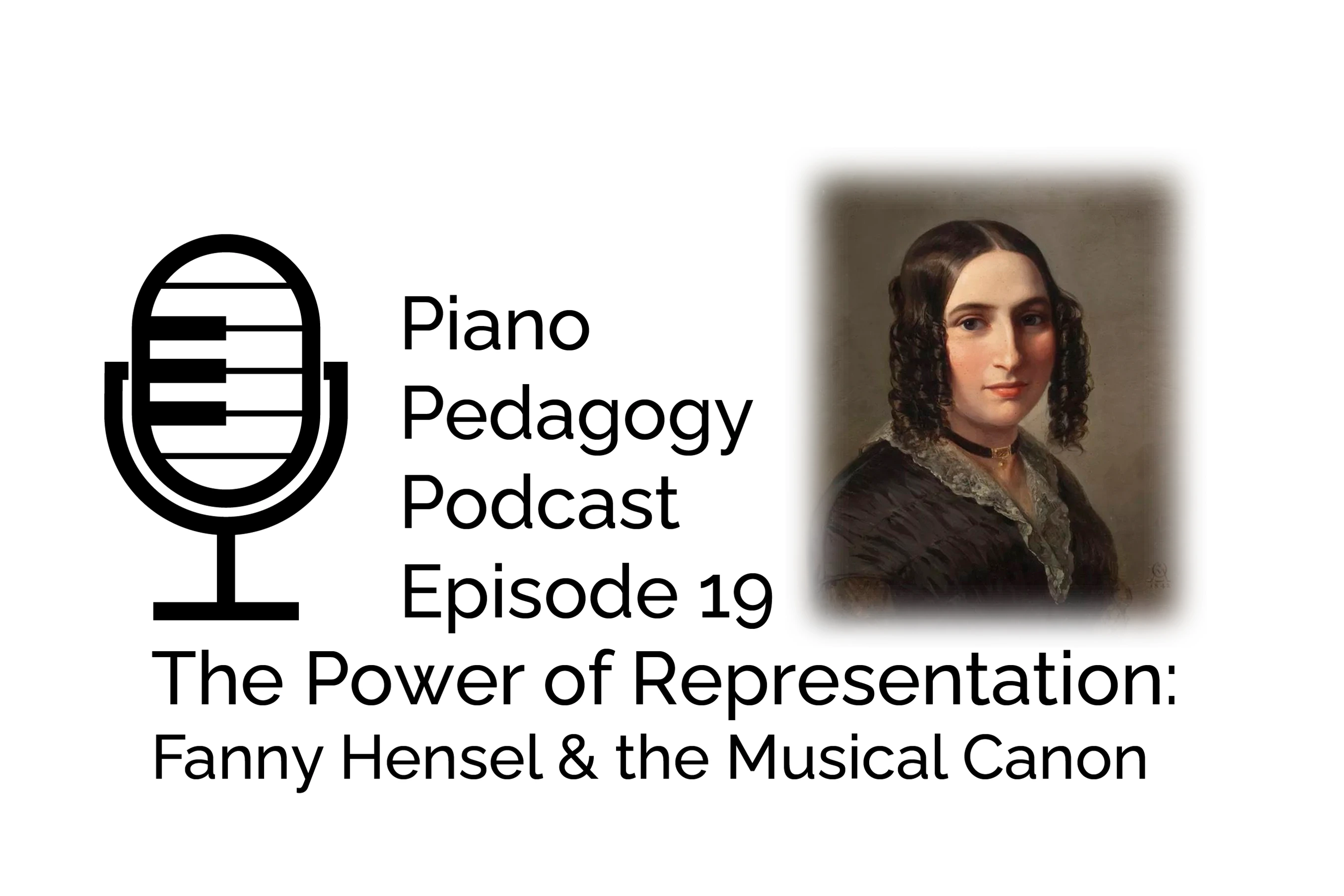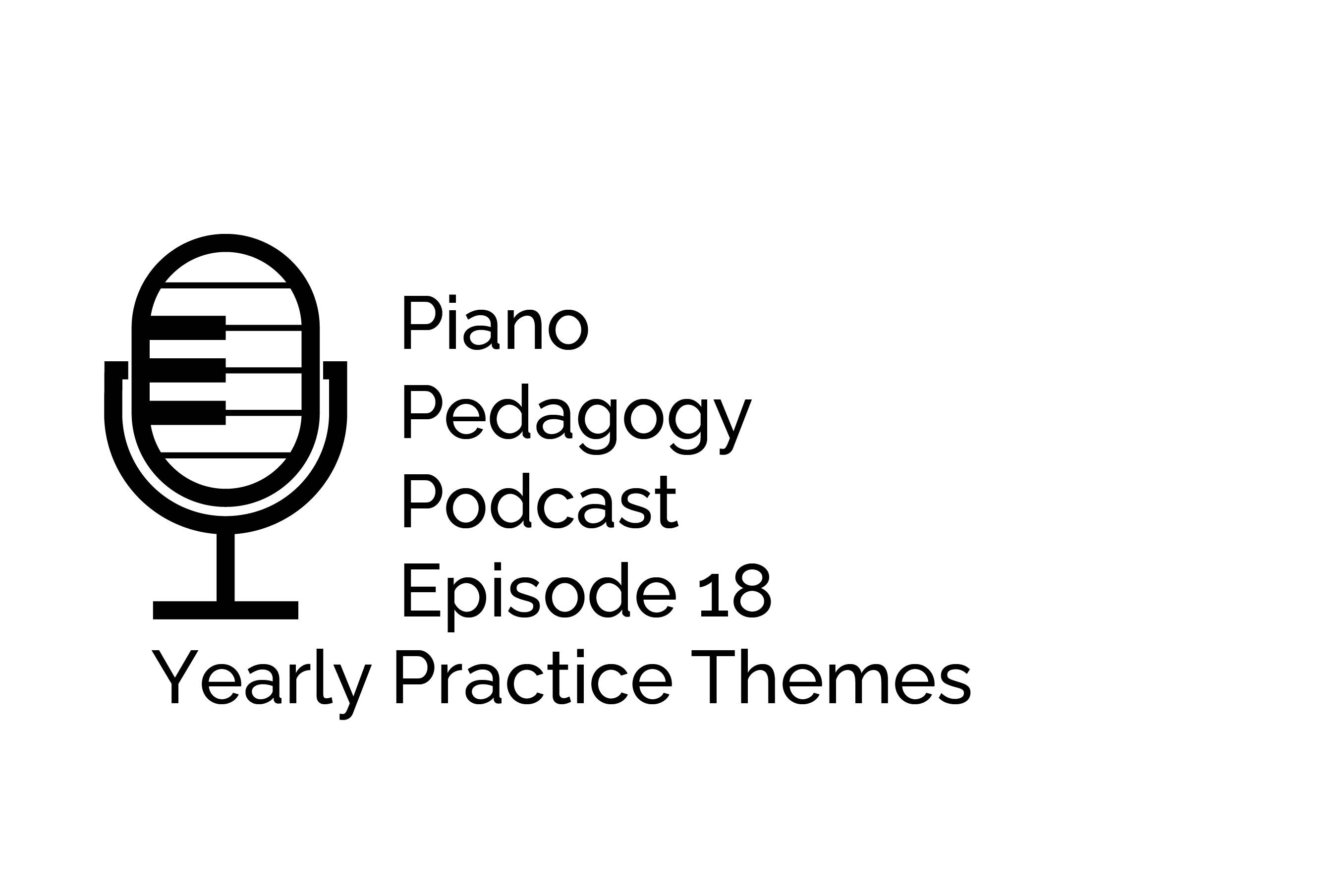Piano Pedagogy Podcast Episode 21: Body Mapping
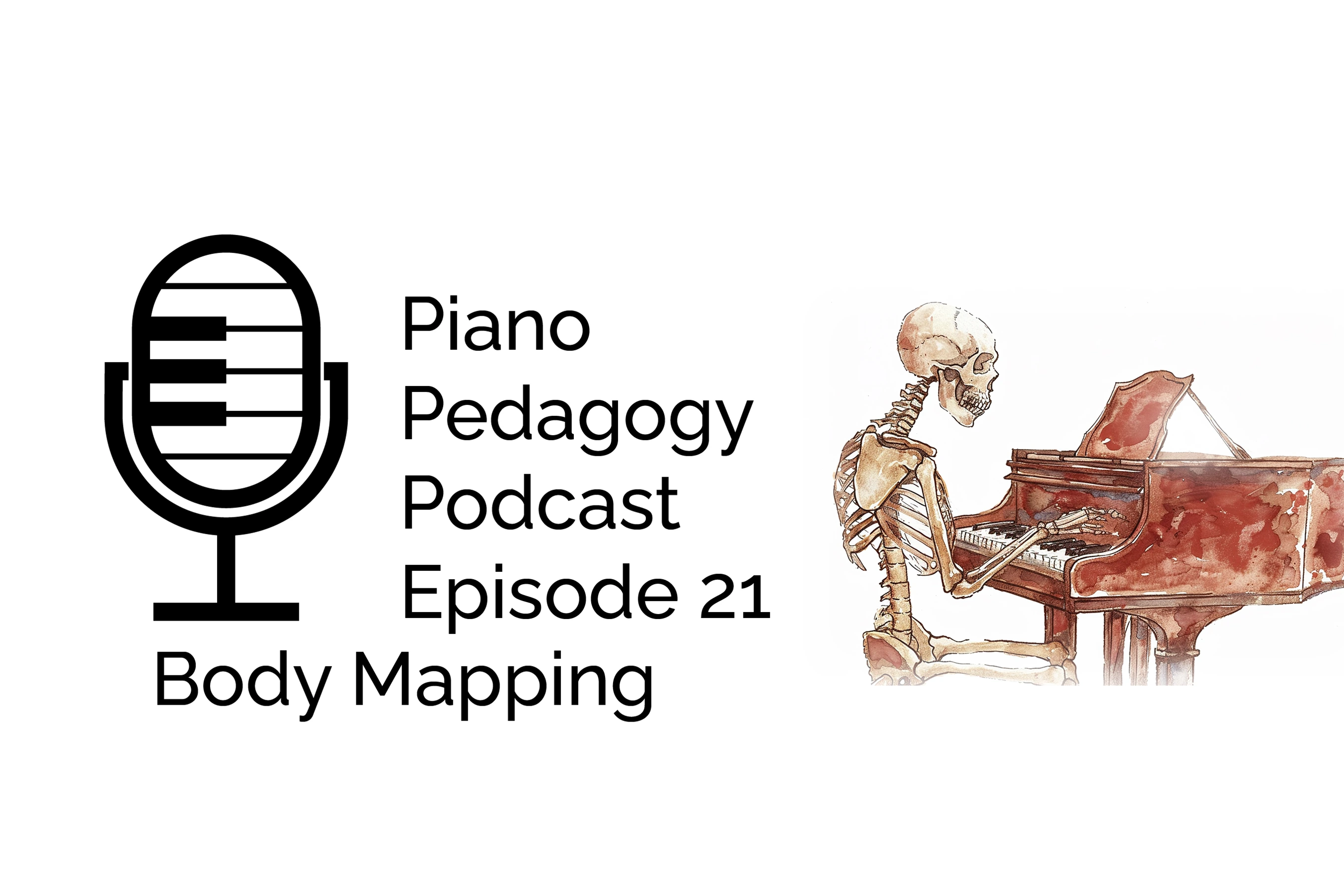
Episode Overview
In this episode of the Piano Pedagogy Podcast, host Jacqueline Beckoff sits down with Cana Kashima, a performance science major at Cal State Fullerton, to unravel the concept of body mapping. They explore how understanding our true anatomy can help musicians play more effectively, prevent fatigue and injury, and enhance musicality. Cana shares her personal journey with body mapping and Alexander technique following a car accident and how it transformed her approach to the piano.
Jacqueline and Cana discuss common "mismappings" – misunderstandings of how our bodies work – focusing on areas crucial for pianists, such as the head-spine connection, sit bones, finger structure, and arm movement. They also touch upon how to introduce these concepts to students of various ages, the importance of addressing pain immediately, and why relying on intuition isn't always enough.
Join Jacqueline and Cana for an insightful exploration into performance science and learn practical ways to integrate body mapping into your teaching and playing.
Listen on Spotify, YouTube, or your favorite podcasting app.
Episode Notes
In this episode, Cana and Jacqueline discussed several resources, including What Every Musician Needs to Know About the Body, which is a comprehensive look at body mapping. Check it out on Amazon and start your body mapping journey!
Defined Music Teacher uses affiliate links, and if you purchase products using a link from our website, we may receive a commission.
About the Guest
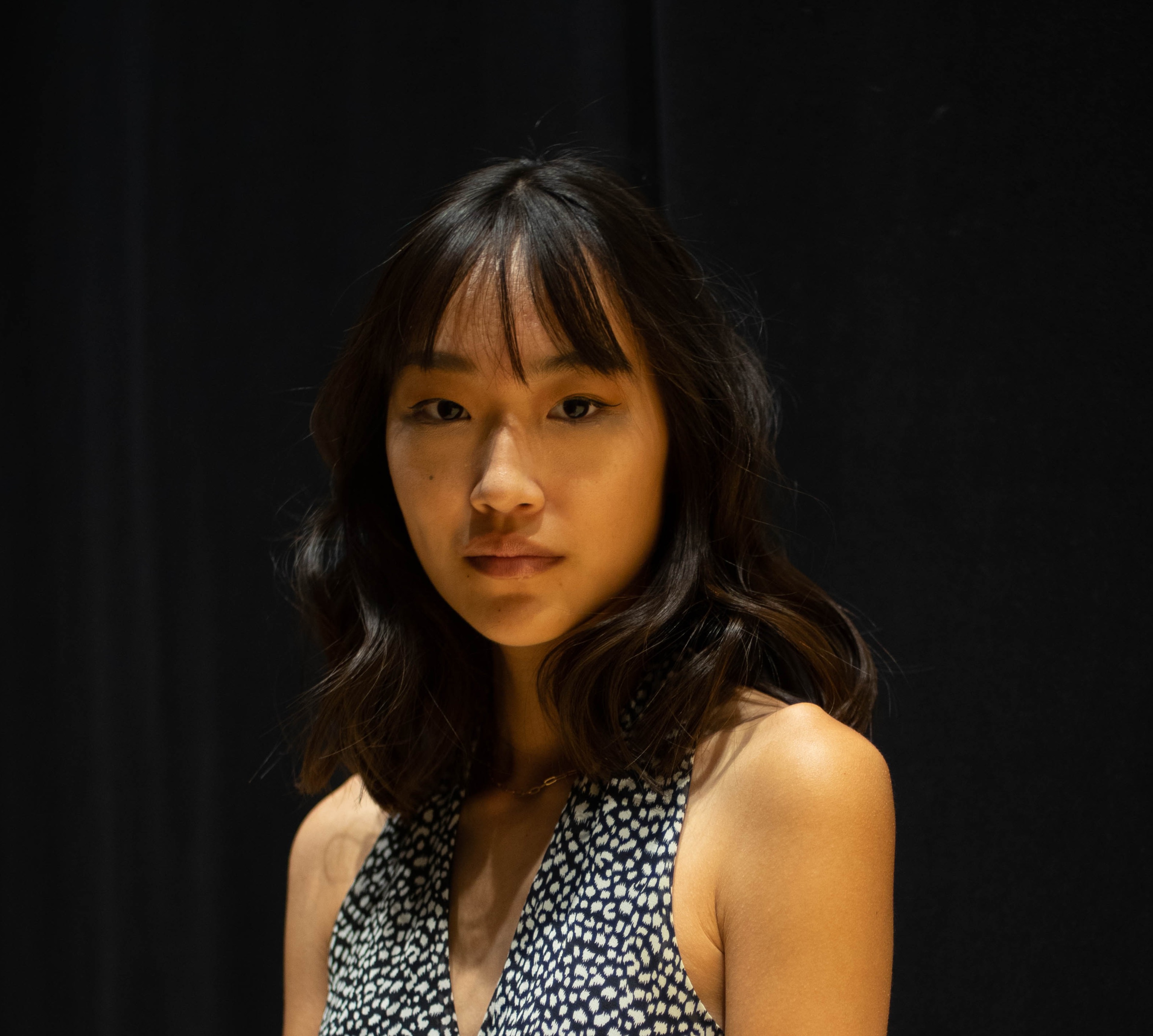
Cana Cashima is known for her sharp intuition and creative approach in both performing and teaching. An active performer and pedagogue, she began studying piano at the age of 6 and received a Bachelor of Music in Piano Performance from the University of California Irvine, studying under Dr. Lorna Griffitt. Currently, Cana is pursuing a Master of Arts in Piano Pedagogy and a post-baccalaureate certificate in Performance Science for Musicians, both at the Cal State Fullerton School of Music. Her interest in performance science and body mapping stemmed from rehabilitating a chronic injury sustained in a car accident, which led her to explore Alexander technique and subsequently, the detailed anatomical understanding offered by body mapping. She applies these principles in her own teaching.
You can find Cana on Instagram @CanaKashima or at her website www.canakashima.com
Body Mapping: An Introduction
What is Body Mapping?
- Understanding the true anatomy of the body to help play an instrument effectively.
- Aims to prevent fatigue, tension, and injury, while improving musicality.
- Involves creating an accurate internal "map" of how the body is structured and how it functions.
Overlap with Alexander Technique
- Both disciplines focus on body awareness and efficient movement.
- Alexander Technique often starts with the "primal control" – the relationship between the head and spine – and works outwards.
- Cana found Alexander Technique life-changing after her injury, helping her relearn piano playing with greater comfort and better results.
Common Mismaps & Anatomical Truths
The Head-Spine Connection (AO Joint)
- The head balances on the spine roughly between the ears, much higher and more central than many people assume. This point is called the AO (Atlanto-Occipital) joint.
- Leaning the head forward disrupts this balance, affecting the entire spinal alignment.
- Maintaining this balance is foundational ("primal control") for overall posture and ease of movement.
Sit Bones vs. Tailbone
- The spine has a natural S-curve and connects down to the pelvis.
- When sitting balanced, weight should rest on the "sit bones" (or "booty bones").
- Slouching or poor posture shifts weight onto the tailbone (coccyx), which isn't designed for weight-bearing.
- This forces back muscles to compensate, leading to pain and strain.
- Instead of "sit up straight," think "balance on your sit bones".
Fingers and the "Palm"
- Anatomically, the finger bones extend much further back than the knuckles we typically see, effectively reaching the wrist area. There is no anatomical "palm" separate from the fingers in the skeleton.
- Mismapping the fingers (thinking they end at the main knuckles) can limit movement and understanding.
The Arm Structure
- Many people think the arm starts at the shoulder joint.
- Anatomically, the arm structure begins at the sternum, involving the collarbone and shoulder blade.
- Understanding this broader structure allows for greater freedom and utilization of the entire arm's capacity for tone production and movement.
The "Wrist" and "Waist"
- Like the "shoulder," the "wrist" is often mismarked.
- The actual wrist joint is closer to the hand than where a wristwatch sits. The bone commonly associated with the watch area is the start of the forearm.
- "Waist" is considered a fashion term, not an anatomical landmark. Bowing, for example, should initiate from the hip joints, not the perceived "waist".
Applying Body Mapping in Teaching
Starting Early
- Basic concepts can be introduced even to very young children (e.g., age 4) without using complex terminology.
- Example: Coloring the entire finger (down to the wrist area) in activity books.
Progressing with Age
- Around ages 7-10, analogies can be used. For example, "imagine your head is a pumpkin balancing on a broomstick" to explain the head-spine balance.
- Older students can learn more specific terms and concepts (like the AO joint) if appropriate.
Addressing Pain
- Pain during practice (aside from emotional frustration) is never normal and indicates something is wrong.
- Stop immediately if pain or discomfort occurs.
- An accurate body map is crucial for identifying the source of the pain and correcting the movement causing it.
Episode Recap
This episode provides a compelling introduction to body mapping for musicians and educators. Cana Kashima's insights reveal how a deeper understanding of our own anatomy can prevent injury, increase playing comfort, and unlock greater musical potential. By correcting common mismaps about how our bodies are structured – from the head-spine connection to the true length of our fingers and arms – we can move more efficiently and healthily. The key takeaway: listen to your body, address any pain immediately, and invest time in learning your own anatomical map. It's essential not only for our own well-being but also for guiding our students toward a lifetime of healthy, expressive music-making.
Join Jacqueline next time for more valuable insights and expert advice on all things music education. Share your thoughts and experiences with teaching staff notation on the Defined Music Teacher Facebook page.
